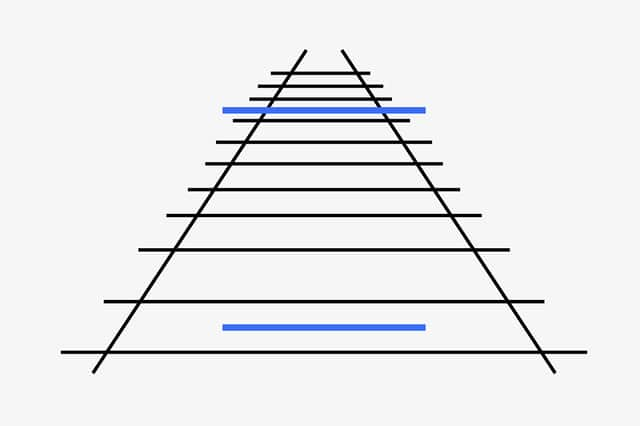Ponzo illusion: what is popular optical illusion, and can you correctly identify the size of lines in image?
and live on Freeview channel 276
Optical illusions are a fun way to test both the way the brain and the eyes work. They can reveal things about your personality, or your thoughts and feelings, or how good your eyesight is.
Some optical illusions are so good they go viral on social media, such as the photo which shows a dog hiding in plain sight, the baffling spinning horse video, the seemingly simple triangle trick, the perplexing mermaid, donkey, fish and seal image, and the freaky ‘death hole’ video.
Advertisement
Hide AdAdvertisement
Hide AdBut, some optical illusions have been around much longer than the existence of social media. One of those is the popular Ponzo illusion, which has been confusing people for more than 100 years. So, what exactly is the Ponzo illusion, where did it come from, and can you see it correctly? Read on to find out.
What is the Ponzo optical illusion, and where did it come from?
The Ponzo illusion is a geometric-based optical illusion which was first demonstrated by the Italian psychologist Mario Ponzo in 1913. Ponzo, who named the illusion after himself, thought that the human mind judges the size of objects based on the background it is against. To test his theory and demonstrate it to others, he drew two lines across a pair of converging lines, similar to railway tracks. An image like this can be seen below. The blue lines are the main lines to look at in our image.


In this image, we tend to interpret the top line as though it were longer than the bottom one because it is farther away as we believe that a farther object would have to be longer than a nearer one for both to produce images of the same size from our perspective. But is this correct or are our own eyes playing tricks on us?
What is the correct answer to the Ponzo illusion?
Both of the lines in the Ponzo illusion are actually the same length. If you are unsure, you can get ruler out to check and measure each one. The top line just looks longer than the bottom one because our brains view the converging sides through something called a linear perspective as the parallel lines appear to get further away in the image. This graphic projection technique affects the way we view things as we look at a drawing.
Advertisement
Hide AdAdvertisement
Hide AdHow does the Ponzo illusion work?
There are multiple theories around how the Ponzo illusion works, but none of them have been scientifically proven. The first is based around the perspective hypothesis, which states that the two main lines appear to meet toward the horizon or a vanishing point, and that makes one appear larger than the other.
Another comes from the framing-effects hypothesis, which states that the difference in the size of the gap between the background horizontal lines may explain why the image appears to show that the two main lines are different lengths.
Or, it could be based upon the moon hypothesis, in which objects which appear to be far away and on the horizon seem much bigger than objects closeby, much like how the moon looks a lot larger in the sky than a tree on the ground.
We might not be sure why the Ponzo illusion works, but it’s a seemingly simple yet complex image that has captivated people for over a decade. Why not share this article with your friends and family to see what they think? If you’d like to see more illusions, you can head over to our dedicated optical illusions page.
Comment Guidelines
National World encourages reader discussion on our stories. User feedback, insights and back-and-forth exchanges add a rich layer of context to reporting. Please review our Community Guidelines before commenting.
